Can people with high blood sugar eat watermelon?
A few days ago, I answered a "high blood pressure patients can eat watermelon" question, many users are asking: high blood sugar people can eat watermelon? In the spirit of serious, responsible attitude, I looked for a lot of information, finally know the high blood sugar people in the end can not eat watermelon, this article tells you how to eat watermelon scientific and healthy!

Online for high blood sugar people can eat watermelon has a variety of different opinions, some say that watermelon is so sweet, certainly can not eat; there are also said that more than 90% of the watermelon is water, high blood sugar people of course can eat. It's really a case of the mother-in-law has a point and the father-in-law has a point! So, in the end, that one statement is correct? Below I will bring you together to uncover this truth.
First, let's take a look at the nutritional content of watermelon
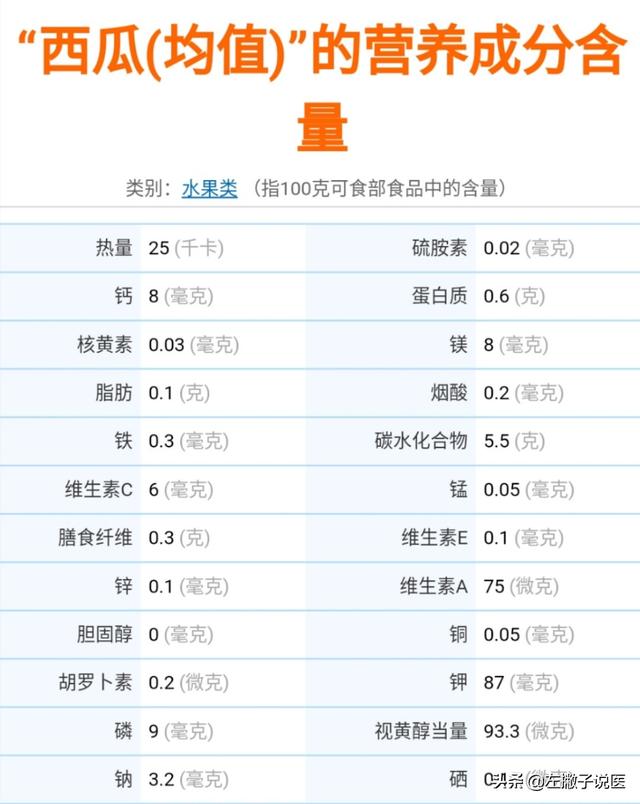
As we can see from the watermelon's nutrient content table, per100 grams of watermelon in the edible part of the nutrients contained in water 93.3g, protein 0.6g, fat 0.1g, carbohydrates (sugar) 5.5g, calcium, phosphorus, iron, zinc 17.4mg, vitamins 0.5mg, dietary fiber: 0.3gIn addition, there are other trace elements, citrulline, arginine, alanine, amino butyric acid, glutamic acid and other amino acids, as well as phosphoric acid, malic acid, ethylene glycol and other nutrients, so it can be said that watermelon is a particularly nutritious and safe food.
From the nutritional profile of watermelonWatermelon contains about 5% sugarThe main glucose, fructose and sucrose, see this content does not seem to be high, relative to other fruits is also low, so high blood sugar people can not eat it? Will it raise blood sugar at once? This depends on the Glycemic Index (GI) of watermelon.
So what is the Glycemic Index (GI)? It is a measure of the effect of different types of carbohydrates in food on postprandial blood glucose, which means that high GI foods can be digested and absorbed quickly, thus causing an immediate rise in blood glucose. We can categorize them according to this standard: GI value less than 55 is low GI food, between 55 and 70 is medium GI food, and more than 70 is high GI food. The higher the GI value, the faster the food is digested and absorbed after entering the gastrointestinal tract, which leads to a faster release of glucose in the blood and a greater increase in blood glucose.
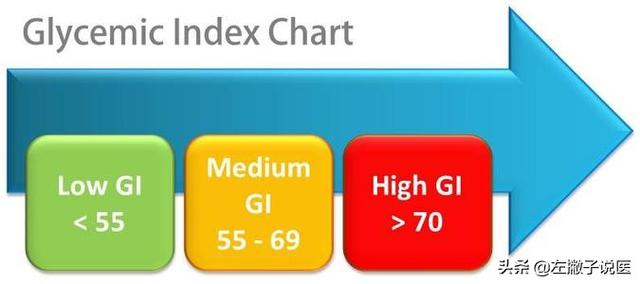
We looked it up online.Watermelon has a glycemic index GI of 72Watermelon is a high glycemic index food, which can be considered high. So, watermelon is a food that raises blood sugar particularly fast.
But there are also studies that prove that watermelon, when consumed in moderation, does not cause a significant rise in blood sugar, and that watermelon can be considered a healthy food. Why is that? This is because foods with a high GI do not necessarily cause an increase in blood sugar, this also depends on the amount of sugar in the food, which means the glycemic load (GL) of the food.
Above mentioned the glycemic index (GI), and now comes a glycemic load (GL), this is in the end such a thing, is not to see the guys are confused? In fact.When we are evaluating whether a certain food can be eaten by diabetics or not, we should not only look at the glycemic index (GI) of the food, but also take into account the glycemic load (GL) of the food.. In other words, look at whether or not the blood sugar generated by this food exceeds the glycemic load or not.

This glycemic load (GL) value is actually a combination of the quantity and quality of carbohydrates used to indicate how much a certain weight of food affects the body's blood sugar. And the formula for it is:Weight of actual available carbohydrates per 100 grams of ingested food multiplied by the GI value of the food and divided by 100, this one value is arguably a better indicator of whether or not you can eat watermelon than the Glycemic Index (GI), and it also calculates how much watermelon you can eat. And this GL value is standardized as follows:When GL ≥ 20, it is a high load diet, suggesting that the corresponding weight of food consumed has a significant effect on blood glucose; ② When 10 ≤ GL ≤ 19, it is a medium load diet, suggesting that the corresponding weight of food consumed has a general effect on blood glucose; ③ When GL ≤ 10, it is a low load diet, suggesting that the corresponding weight of food consumed does not have a significant effect on blood glucose.. So, now we can follow this formula as well as this criteria to figure out how much watermelon to eat without affecting your blood sugar.
Now let's take an example: if a person with high blood sugar wants to eat 200 grams of watermelon, let's calculate whether this amount of watermelon has any effect on blood sugar. We know that every 100 grams of watermelon contains 5.5 grams of carbohydrates, and the GI of watermelon is 72, so according to the formula settlement we can conclude:5.5×2×72/100=8. And this value of 8 is for a low load diet, indicating that a person with high blood sugar can eat 200 grams of watermelon without any significant effect on blood sugar, and can eat with confidence.
So what if you eat a pound (500g) of watermelon? Let's do some more math:5.5×5×72/100=19.8That's equal to about 20. This calculated value is already a high load diet, so if we eat 1 pound of watermelon in one sitting, then the effect on blood sugar is more pronounced.
So, after the above analysis, we already know that people with high blood sugar can eat watermelon, but it must be in moderation, that is to say, you can not eat more!
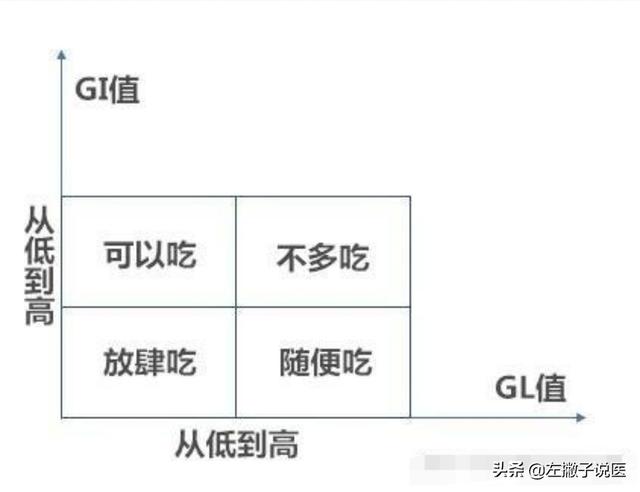
So, how can people with high blood sugar eat watermelon with confidence? There are a few things to keep in mind here as well:
First, the amount of watermelon you eat should be controlled, that is, eat in moderation
As we have said above, people with high blood sugar can eat watermelon, but this does not mean that people like normal people to eat nothing, if you eat too much, then it will have an impact on blood sugar. Through the above example, we already know that people with high blood sugar can eat 200g of watermelon at one time, which has little effect on blood sugar. So.For people with high blood sugar they should limit watermelon to less than 200g per meal, perhaps in small quantities.
Secondly, you need to know when to eat watermelon
Although it is said that watermelon high blood sugar people can eat watermelon, but the timing of this meal should also know, it is best not to eat before or immediately after the meal, should be watermelon as a meal to eat better. Because this can effectively avoid a one-time intake of too many carbohydrates. In addition, if you have to eat watermelon after a meal, then you have to reduce the intake of other carbohydrates, such as eating half a bowl of rice less than usual.
Third, you should also monitor your blood sugar before and after eating watermelon
High blood sugar is not higher than normal people, normal people can eat watermelon anytime, anywhere, but for people with high blood sugar, before and after eating watermelon should monitor their own blood sugar. Is to ensure that the blood sugar is stable when eating watermelon, and then is to eat watermelon to see the changes in blood sugar, according to the level of blood sugar to eat watermelon, to do "know", so that is a healthy way to eat.
To summarize:
Overall, although high blood sugar people can eat watermelon, but the amount must be controlled, and the above mentioned 3 precautions should be taken seriously, if too much watermelon in a short period of time, not only will easily cause blood sugar rise, the more serious condition may also be due to metabolic disorders and lead to acidosis, and even life-threatening. And when eating watermelon, it is best to correspondingly reduce the number of meals or pasta products, to ensure that the daily intake of carbohydrates in a stable range, so as not to affect the blood sugar, aggravate the course of the disease.
Content Expanded - Here's the point: a list of fruits for diabetics
Finally, then offer a list of fruits suitable for diabetic patients, which contain a variety of fruits 100g sugar content, glycemic index (GI) and glycemic load (GL), we can follow the value of this table to calculate how much fruit you can eat at a time to not affect the changes in blood glucose, and for the marking of the red kinds of fruits, for people with high blood sugar should not eat.
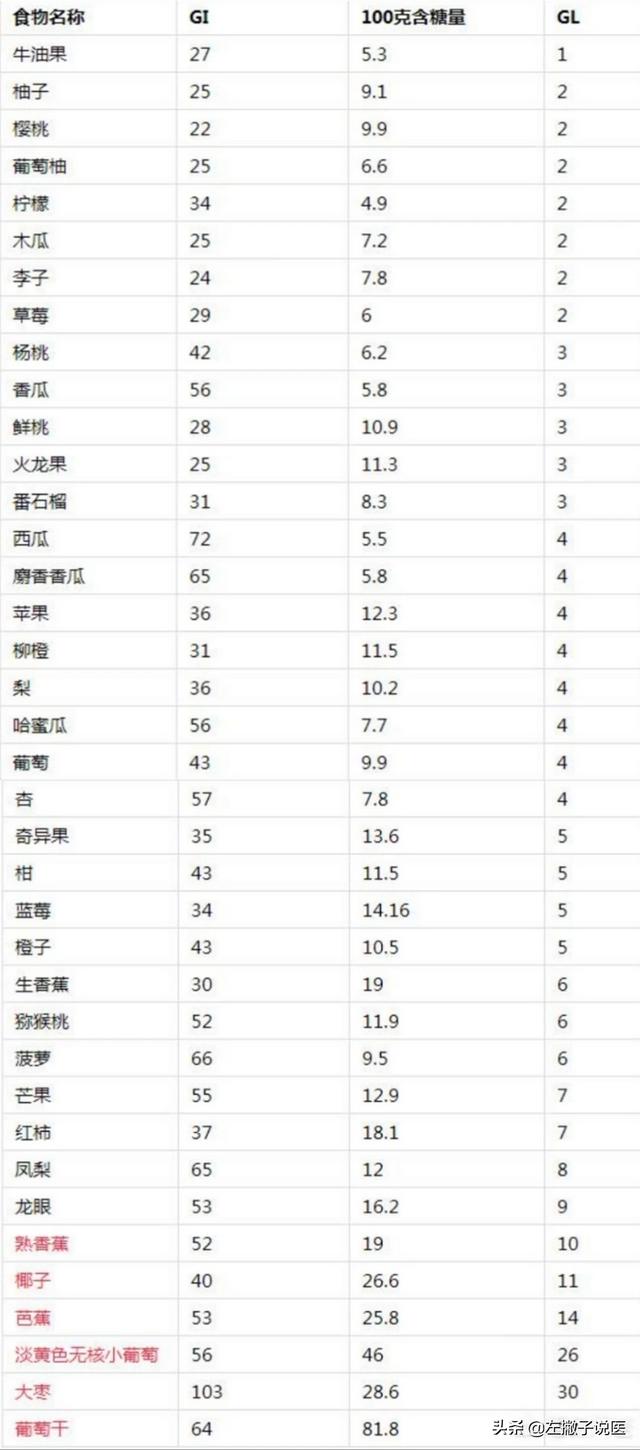
Author's note: I'm very happy to popularize health-related knowledge for everyone, I'm left-handed to say medical, every day in simple language for you to popularize professional medical knowledge, the code word is not easy, if you like my article, help me to point a praise! If you still have questions, you can leave a message in the comments section, welcome to pay attention to, forward, thank you for your support!
Watermelon is indeed a high sugar content fruit, and eating watermelon can lead to a rapid rise in blood sugar, which is not good for those who have high blood sugar themselves, or diabetics.
But do not have to completely and watermelon "insulation", you have to do is to control the amount, do not hold half of the watermelon as a meal to eat, but to eat a small amount of time, such as a small piece of food, eat twice a day.
And if you feel like you've eaten more watermelon today, try to cut back on other fruits, as well as carbs, which means controlling your overall sugar intake to give your body a buffer. Also, even though it's hot in the summer, don't eat frozen watermelon - it's too much for your gut, and it's best to let watermelon sit for 10 minutes after you take it out of the freezer before eating it.
Diabetics can eat it, so why shouldn't people with high blood sugar!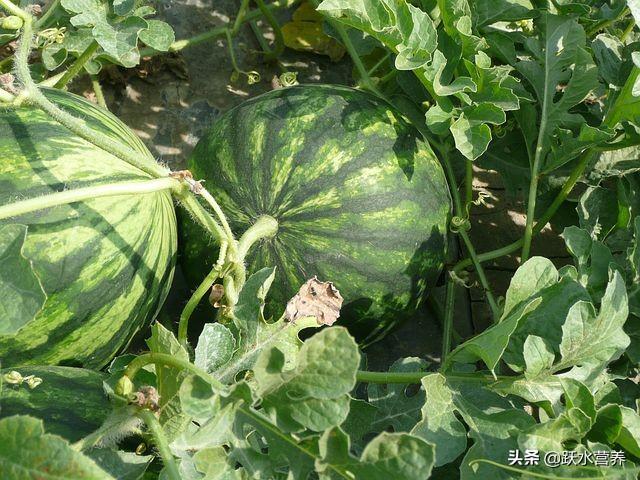
Watermelon, an annual trailing vine; green melon fields, watermelons with different patterns, day and night in the summer, giving rise to many popular stories!
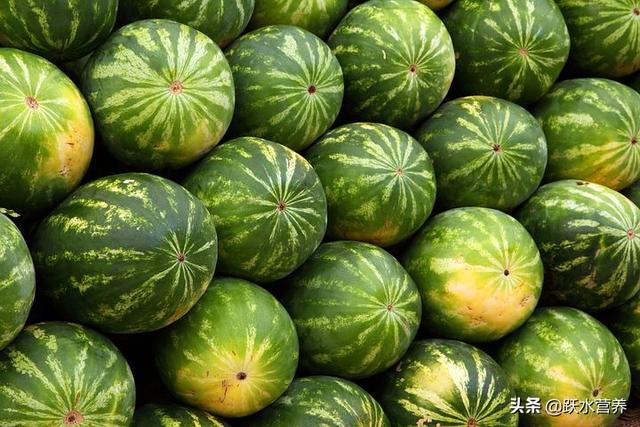
Watermelon is cultivated all over China in the north and south, there are many varieties, with a variety of appearances, colors, patterns, pulp and seeds, and is most famous in Xinjiang, Gansu, Shaanxi, Henan, Shandong, Jiangsu and other places.
Watermelon is 6.8% carbohydrates and has a super high glycemic index of 72 among fruits!
The glycemic load of 100 grams of watermelon is:
6.8*72/100=4.896!
It's a rollover! A total cartwheel! How is it that watermelon has such a high glycemic index, and yet it still has a glycemic load that's only a fraction of that of the same weight of rice?
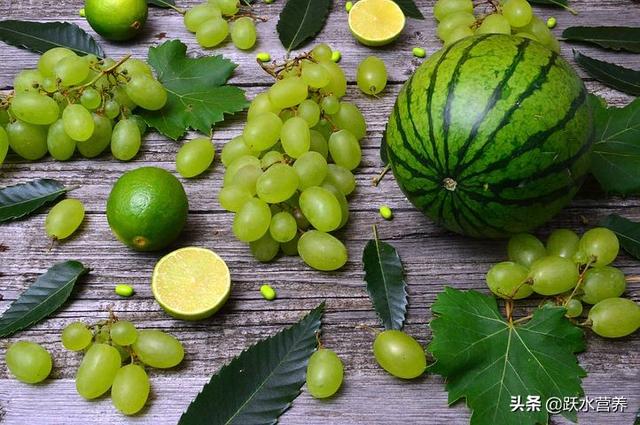
The reason is still that watermelon has too few carbs and too much water!
With a glycemic load of 4.896, it's basically safe to assume that simply eating up to 100 grams of watermelon will have very little effect on your blood sugar.
People usually focus on the flesh of the watermelon, but the rind and seeds can be eaten and used as medicine, such as making "watermelon cream" and so on.
Watermelon for the summer fruit, known as the "king of summer", refreshing thirst, sweet and juicy, basically does not contain protein, fat and cholesterol, is the summer summer heat, heat and diuretic "natural white tiger soup"!
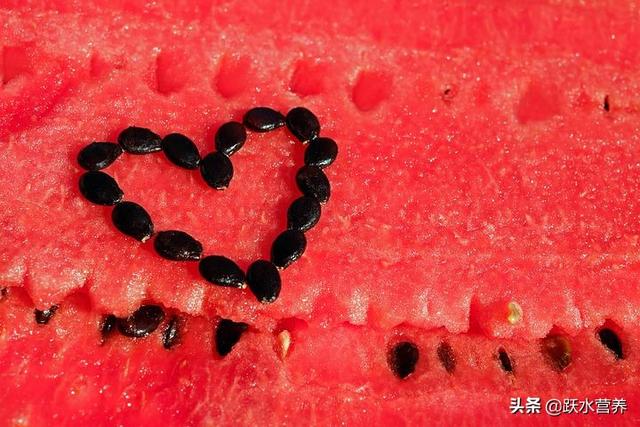
Melon flesh is rich in glucose, fructose, sucrose, malic acid, lycopene, carotene, vitamin C, etc. It is a nutritious, pure and safe hydrating food.
Drinking watermelon juice and eating too much watermelon at one time is not recommended for people with high blood sugar.
"Wisps of flowery shirts spit on jasper, traces of tan blood pinch the skin red.
Fragrance floats in the water of smiling teeth, and coolness enters the bones of the lapel with a breeze."
Watermelon is so delicious, what's the harm in having some for people with high blood sugar!
People with high blood sugar can consume watermelon. People with high blood sugar are suitable to choose fruits with low sugar content and low glycemic index for consumption. The so-called low sugar content refers to the sugar content of fruits <10%, such as apples, pears, strawberries, kiwi, etc. Watermelon also has a sugar content of <10%. Although the glycemic index of watermelon is relatively high, but the sugar content of watermelon is not high, the glycemic load is not high, eat some in moderation, for people with high blood sugar is more beneficial than harmful.
People with high blood sugar, diet is to control, control diet is not to fast, but to diet, high blood sugar can eat anything, but nothing can eat more. For healthy people, we pay attention to a balanced diet and food diversity, the more types of food, the more different nutrients we intake, not easy to cause some nutrient deficiencies, to maintain the health of the body is also the most helpful, these dietary principles of high blood glucose, the same applies. But all foods contain sugar, no matter what food eat more food will certainly have an impact on blood sugar.
When people with high blood sugar fasting blood sugar control below 7, postprandial blood sugar control below 10, you can eat some watermelon in moderation, not more than 100g each time, not more than 200g a day, at the same time to deduct 25g from the total amount of staple food for the whole day, in this way, it has little effect on the blood glucose, and it is also easy to control the blood glucose.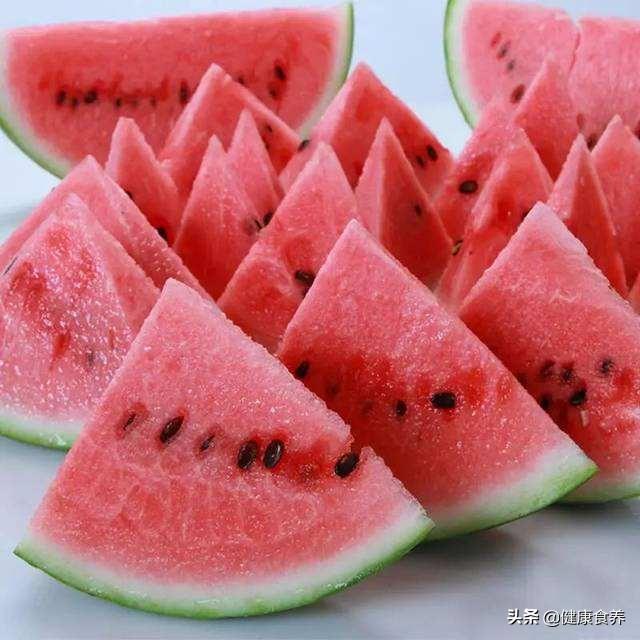 I hope my answer helped you, if you have any questions please leave them in the comment section! More nutritional health and wellness knowledge welcome to my public number.
I hope my answer helped you, if you have any questions please leave them in the comment section! More nutritional health and wellness knowledge welcome to my public number.
Watermelon is one of the most common fruits in summer, sweet and juicy, loved by many people, known as the best heat relief. However, in front of the watermelon, diabetic patients can be difficult: watermelon is so sweet, water and so much, sugar friends can eat? In fact.In the case of stable blood glucose control, diabetic patients can eat some watermelon in moderation, it is recommended to eat between meals, about 100 grams is about right, do not eat too much.
Watermelon is so sweet, so why is it okay for diabetics to consume it?
For a diabetic diet, we focus on three main indicators, sugar content, glycemic index (GI) and glycemic load (GL). Sugar content is well understood as the amount of sugar contained in a food, glycemic index refers to the relative speed at which a food enters the body and causes an increase in blood glucose, and glycemic load refers to the magnitude of a food's effect on blood glucose.
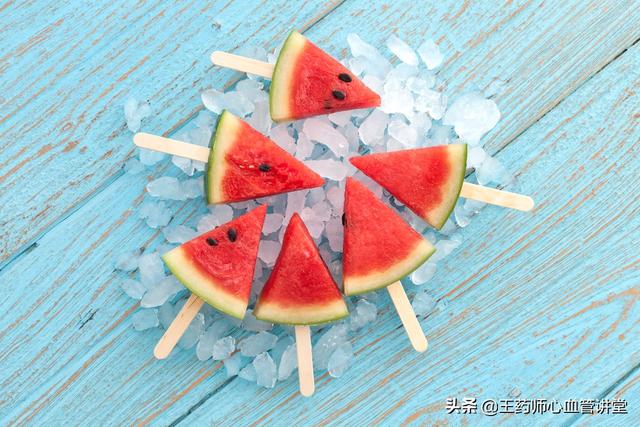
1. Although watermelon is sweet, its sugar content is not very high.In general, watermelon contains about 5% sugar, which means that in 100 grams of watermelon, there are about 5 grams of carbohydrates in it. What level is this? Let's compare it with other fruits. Peaches, grapes, cherries, pears and other fruits have a sugar content of about 8% to 10%, oranges, grapefruit, apples, figs and other fruits have a sugar content of about 9% to 13%, and fruits with a sugar content of more than 14% include cinnamon, bananas and pomegranates. Compared with these common fruits, the sugar content of watermelon is considered low.
2. Watermelon has a high glycemic index but a low glycemic load.The glycemic index of watermelon is about 72, which belongs to the high glycemic index food (food with GI>70), that is to say, the human body after eating watermelon, the speed of blood glucose increase will be very fast. But don't worry, the glycemic load of watermelon is about 4.2, which is a low glycemic load food (food with GL ≤ 10), which means that watermelon has a small impact on human blood sugar. Therefore, watermelon is not a "minefield" that diabetics cannot touch.
Precautions for eating watermelon with diabetes
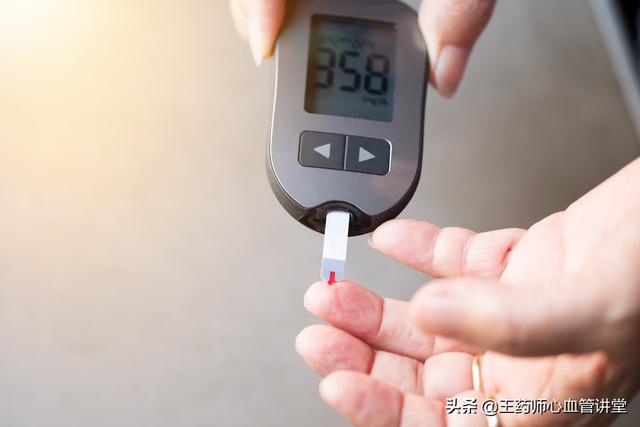
1. Eat in moderation.Can eat watermelon does not mean that you can eat unlimited, after all, watermelon glycemic effect is still relatively obvious, a one-time intake of a large number of watermelon, will inevitably lead to elevated blood glucose, and may even lead to ketoacidosis, which can lead to death in severe cases. In the blood sugar stabilization period, consume about 2 amount is about the same.
2. Consume at two meal times.When diabetics consume fruits, it is recommended to consume them before two meals, such as between breakfast and lunch, around 10 o'clock, or between lunch and dinner, around 4 o'clock in the afternoon. Diabetics should not eat fruit immediately before or after a meal to avoid consuming too much sugar at one time resulting in a significant rise in blood sugar.
3, do not eat watermelon during the period of unstable blood sugar.In fact, not only watermelon, diabetic patients in the period of unstable blood sugar, it is best not to eat any fruit. So as not to cause an increase in blood sugar, aggravating the difficulty of controlling sugar.
Often hear diabetic patients ask, can you eat this, can you eat this, and some articles are exaggerated, such as "XXX food, more than one bite of sugar", so that diabetic patients in front of a lot of food deterred. In fact, there is no food that diabetics can't eat, just control the amount. As long as you keep your mouth shut and strictly follow the doctor's instructions for medication, controlling your blood sugar is not a difficult task.
I am Pharmacist Wang, dedicated to helping you manage your body by explaining complex and difficult disease knowledge in plain words. Your likes are my greatest motivation! Also, if you have a family member who struggles with eating watermelon with diabetes, please pass this article on to them!
Thanks for the invite.
High blood sugar people can eat watermelon, but note that high blood sugar, diabetic patients should choose their own blood sugar control is slightly stable, the ups and downs are not too big during the period to eat, diabetic patients should also note that if the value of glycated hemoglobin is not good, then it is not recommended to eat watermelon. Eat watermelon should also choose their own between meals or exercise and other relatively low blood sugar time period to eat, after meals, blood sugar is slightly higher time period is best not to eat.
Watermelon is a favorite summer fruit, no sweet and tasty, but also juicy, can quench the thirst of the summer, but so sweet watermelon in the high blood sugar in the crowd but can not be expected, because we all think that so sweet food is certainly a greater impact on blood sugar, can not eat. In fact, watermelon is indeed a high glycemic index (a measure of the rate of food per unit of time to raise blood glucose index) food, can be as high as 72 or more (generally speaking, the glycemic index is higher than 55 is a high-glycemic index food), is a proper high glycemic food, but because of the watermelon in the watermelon juice-rich, watermelon's "glycemic load (the relationship between food intake and blood glucose)" is very high, but the watermelon is also very low in glucose. However, because of the rich juice in watermelon, the "glycemic load (an indicator of the relationship between food intake and blood glucose elevation)" of watermelon is very low, so as long as the amount of watermelon is controlled to eat watermelon, the impact on blood glucose may be much better than we thought.
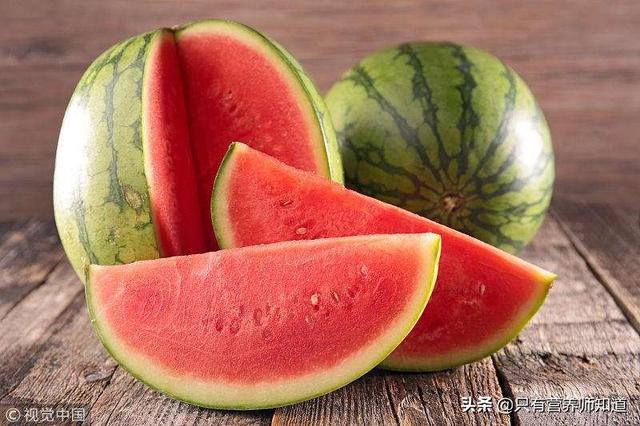
Many friends are unfamiliar with glycemic load, in fact, if the glycemic index is compared to the watermelon "glycemic factor" to make the ability to raise blood sugar, then glycemic load is like these glycemic factor dispersion of the density of watermelon glycemic factor due to the water and dispersal of the number of units in the volume of the fewer, so even if the glycemic factor of the ability of the higher. So even if the power of glycemic factor is high, the final effect on blood glucose is not so terrible because of the small number of people; to be more specific, glycemic load is actually the combination of the quantity and quality of carbohydrates; if the glycemic load is greater than 20, it is a proper high-load diet, which has a large effect on blood glucose, and if the glycemic load is less than 10, it can be regarded as a low-load diet, which has not a large effect on blood glucose. Glycemic load can be obtained by multiplying the weight of actual available carbohydrates per 100g of ingested food by the glycemic index of the food and dividing by 100. For example, if we eat only 100g of watermelon, the glycemic load will be: 5.5 x 1 (carbohydrate content in 100g of food) x 72 (glycemic index of watermelon) / 100 ≈ 4, which is a completely low load diet. But on the contrary, if we eat a pound in one sitting: 5.5 x 5 x 72/100 = 19.8 , which is close to a high load diet, and the impact on blood glucose would be significant.
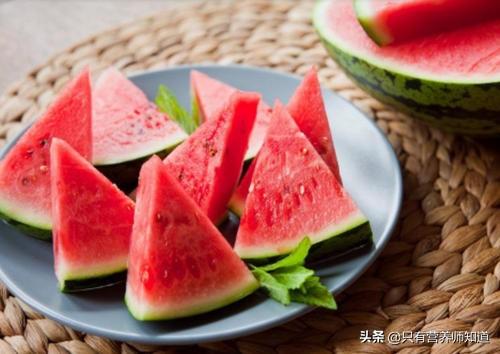
Therefore, as long as we do not eat more, appropriate to eat some watermelon, for people with high blood sugar is acceptable, such as a one-time only eat 100g watermelon meat, in fact, the impact on blood sugar is not too big. Watermelon is rich in water with diuretic thirst quenching effect, for hypertensive patients is still beneficial, can help sodium excretion, maintain osmotic pressure stability. Watermelon is rich in dietary fiber, dietary fiber is actually also help to inhibit the rise in blood sugar, in short, overall, high blood sugar patients can eat watermelon.
In summer, melon eaters start to stage eating melon fruits, especially the inexpensive watermelon. There are usually two modes of eating melon, one is to cut the watermelon directly and eat it in one big mouthful, and the other is to eat it by holding half a watermelon and digging it with a spoon. But these have become scenes of envy for the diabetic crowd.
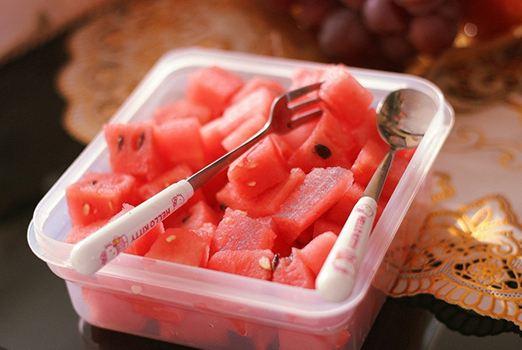
They say watermelon is sweet, and it is indeed sweet when consumed. For diabetics who need to limit their sugar consumption on a daily basis, does eating watermelon lower or raise blood sugar?
Many diabetic patients think that watermelon is a sharp weapon to raise blood sugar, but in fact, not, as can be seen from the Chinese nutritional composition table, watermelon is not as people think, is a very high sugar content of the fruit, take a lot of people will eat jingxin watermelon to look at, the calorie per hundred grams of just 34 kcal.
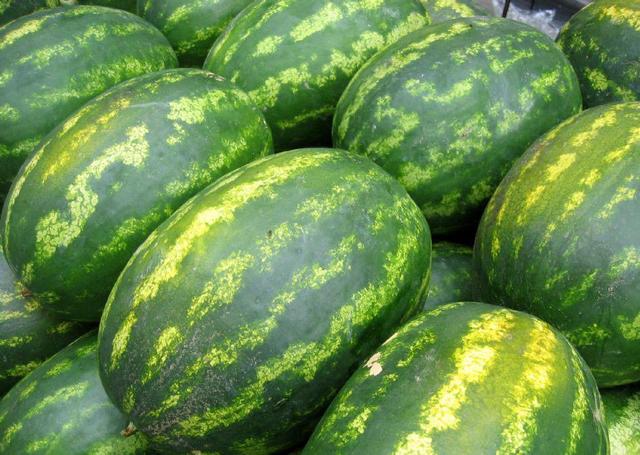
So it seems, watermelon is really not a high sugar fruit. However, you should not just look at the sugar content of watermelon, but also pay attention to the glycemic index of watermelon. Its index is 72, which makes it a high glycemic index food compared to other summer fruits.
If people just eat the red flesh of watermelon, in the case of eating more, it is indeed easy to raise blood sugar, which is not good for controlling the condition. However, in order to satisfy the desire of sugar lovers to eat watermelon, we can also eat it in another way, that is, when you eat watermelon, not only eat the red flesh inside the watermelon, but also eat the white flesh together.

Or specifically cut the watermelon into a small piece of a small piece of the white flesh together, the white part is not only high water, dietary fiber content is also very high, so that the way to eat together, it is conducive to diabetic patients to control their condition, eat a small piece of it every day, about one hundred grams of it, you do not have to worry about it.
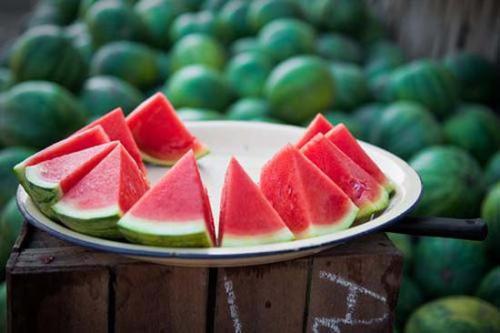
So if a diabetic wants to lose weight, does eating watermelon increase or decrease weight?
In fact, for diabetics who want to lose weight, watermelon is equally a fruit worth eating. But only if you eat the white-fleshed part together, or just the white-fleshed part, which can be considered a weight loss tool.
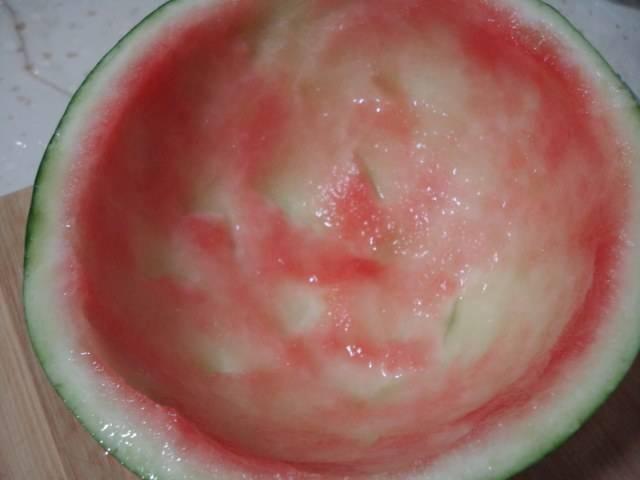
The biggest benefit of the dietary fiber in it, is that it can give diabetics an enhanced feeling of fullness and make the meals we consume smaller. It's even better if you are able to consume it before meals, and a little bit in moderation will also benefit your blood sugar after meals.
Some people say that the white flesh is not good. Compared to the red flesh, the white part is indeed a little less tasty, not sweet and tasteless. In this case, you can cut off the white part and use it as a summer gazpacho or put it into fruit salad, which is also a good food choice.
This year, a popular saying, not to mention the dose of talking about the ingredients are hooligans, but high blood sugar is indeed not advisable to eat more fruits with high sugar content, there are still a lot of simple sugars in the fruit, directly absorbed by the bloodstream blood sugar will soar. So the craving for a little less, do not be greedy!
In summer, the weather is so hot that you see watermelon, the miracle of summer heat relief, being sold everywhere on the streets. You can't help but buy one or two and put them in the freezer to make them taste even better.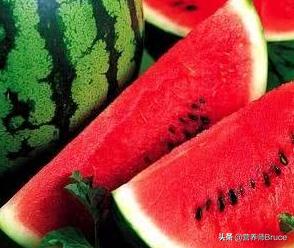
But can you eat watermelon for people with high blood sugar?
I'm sure many people will have questions about the fact that watermelon is, after all, sweeter, so it must have a higher sugar content.
If it's just because it's sweet, watermelon is going to be an injustice.
Those who have studied nutrition should be aware that one of the criteria for judging the sugar content of watermelon is the GI value.
- The GI value is also called the Glycemic Index.
The glycemic index refers to the ratio of the area under the time curve of blood glucose produced by a food containing 50g of carbohydrate that causes a rise in blood glucose to the area under the time curve of blood glucose produced by glucose multiplied by 100, reflecting the rate and ability of a food to raise blood glucose compared to glucose;
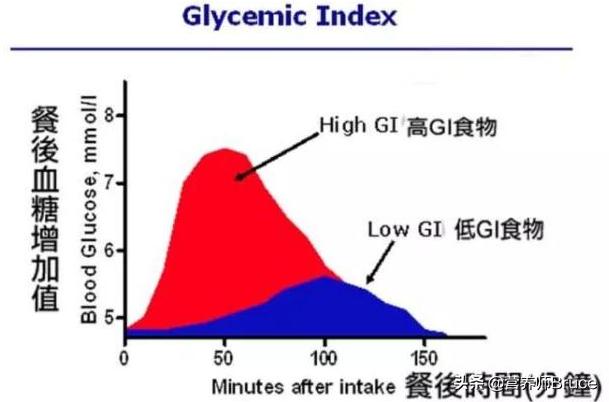
- Glycemic Index Calculation
Carbohydrate content of food x glycemic index/100
First prepare foods containing 50g of carbohydrates. Due to the large gap in sugar content of foods, consuming 50g of carbohydrates requires eating 50g of glucose, 200g of rice, 500g of watermelon, and 625g of carrots.
A GI value of <55 is considered low glycemic index;
A GI value of 55-70 is a moderate glycemic index;
A GI value >70 is considered high glycemic index.
You can see that watermelon and carrots have a high glycemic index, does that mean you can't eat them at all?
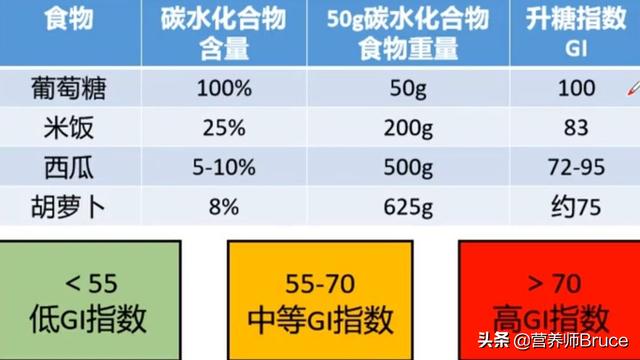
It's not really to be interpreted that way.
Could it be that eating a whole watermelon, and a small piece of watermelon, have the same effect on insulin?
Definitely not.
- Needs to be evaluated in conjunction with glycemic load (GL)
Glycemic load = (100g food carbohydrate × food glycemic index value) ÷ 100
Glycemic load of rice:
100g of rice contains 25g of carbohydrates and has a glycemic index of 83. Glycemic load = 25 x 83 ÷ 100 = 20.75
Glycemic load of carrots:
100g of carrots contain 8g of carbohydrates, the carrot glycemic index value is 75, glycemic load = 8 x 75 ÷ 100 = 6
Glycemic load of watermelon:100g of watermelon contains 10g of carbohydrates according to the highest carbohydrate content, and the glycemic index value of watermelon is 95; glycemic load (GL) = 10 × 95 ÷ 100 = 9.5

- Glycemic load classification
GL index <10 for low glycemic load;
A GL index between 10 and 20 is a moderate glycemic load;
A GL index >20 is a high glycemic load.
It can be concluded that white rice belongs to the category of, high GI and high GL foods;
Carrots belong to, high GI and low GL foods;
Watermelon is a, high GI, low GL food;
Isn't it a surprise? For people with high blood sugar, rice is rather worse than watermelon!
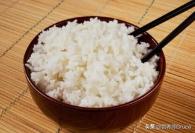
People with high blood sugar generally have insulin resistance
People with high blood glucose are generally accompanied by insulin resistance problems due to poor diets and prolonged sedentary behavior.
Consumption of food that rapidly raises blood glucose causes a large secretion of insulin, which delivers large amounts of sugar to the muscles, liver, and fat cells;
Due to lack of exercise, muscle levels are lower, resulting in blood sugar that cannot be metabolized away, gradually causing fatty liver and obesity;
And there is a limit to the ability of fat cells and the liver to store fat, and once the tolerable range is exceeded, blood glucose will get higher and higher
The end result: more and more weight on the one hand, and higher blood sugar on the other hand

People with high blood sugar can eat watermelon
At this point, it is important to focus on low glycemic index, low glycemic load dietary intake and avoid high glycemic index, high glycemic load foods whenever possible.
If fasting blood glucose does not exceed 10 and blood glucose control is satisfactory, foods like watermelon and carrots, which have a high glycemic index but a low glycemic load, can be consumed appropriately;
Keep within 100~200g per day, when eating can be placed 1 hour before meals, remember not to be able to gluttony, a large number or frequent intake, otherwise it is easy to cause large fluctuations in blood sugar.
Instead, rice and pasta need more attention!
So don't be fooled by your tastebuds, sometimes what looks like "healthy food" is actually the culprit that causes disease.

Adjusting your diet to include some roughage in your staple foods is much more effective in preventing high blood sugar!
◆You can eat it.
◆ But you can't eat it openly.
◆ Watermelon is still high on the glycemic index.
◆Focus on knowing how to plan your diet
I did a video on this topic that you can watch: https://www.ixigua.com/6980970238108140062
I hope this helps.
For example, first of all, I suggest that every diabetic, develop a week of recipes, this recipe includes daily breakfast, lunch and dinner, as well as intermediate food, fruits, etc., to be arranged as rich as possible, nutritionally comprehensive. Before making a recipe, let's do a calculation: standard weight = height - 105, for example, Mr. Wang is 175 tall, his standard weight is 175-105 = 70 kg. Then, we calculate how many calories he needs to consume every day, generally light manual labor, such as office staff, and most of our middle-aged and elderly people, etc., every kilogram of body weight needs 30 kcal calories, moderate manual laborers by 35 kcal per kilogram, heavy manual laborers, can be calculated by 40 kcal calorie, assuming that Mr. Wang is an office staff, then he needs to consume calories is 30 per day. *70 = 2100 kcal. Then, we allocate these calories to three meals a day and to intermediate foods and fruits. We can allocate 1/5, 2/5, 1/5 for breakfast, lunch and dinner, leaving 1/5 for snacks and fruits. The exact amount of calories in each food can be found when you go online, so I won't ramble on here.
This question and answer are from the site users, does not represent the position of the site, such as infringement, please contact the administrator to delete.